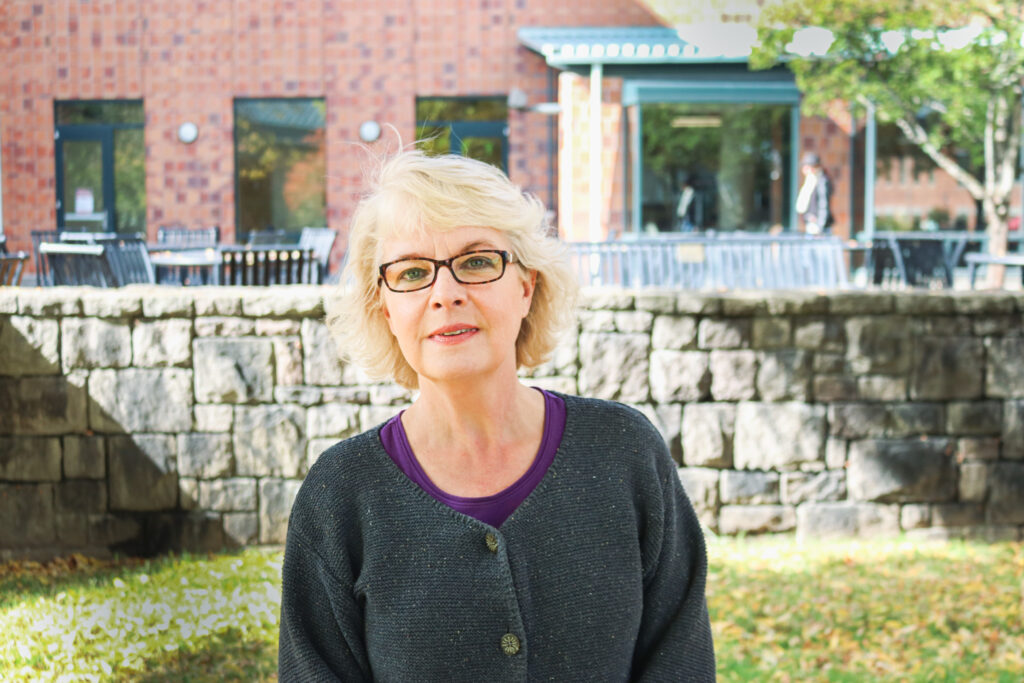Youth on the autism spectrum are in dire need of support when it comes to the ramifications inflicted upon them by the juvenile justice system. While it may come as a surprise, at least one in three young people who qualify for special education are placed in police custody, according to the nonprofit organization, Children’s Defense Fund. As children with autism are placed in juvenile detention centers at alarming rates, Laurie Drapela, WSU Vancouver professor of criminal justice, argues for change in legislation.
Combining her passion for criminal justice and personal experience of being a mother to a child diagnosed with autism, Drapela started to analyze the likelihood of undiagnosed children being placed in juvenile detainment.
“My child got their diagnosis in 2010, and at that point, everything changed. You start looking at institutions through the lens of ‘how can I minimize harm to my child going through this public institution?’ … We were fortunate in getting support very early on, but I also started thinking about the parents who might not be so lucky,” Drapela said.
In her book, “Law and Neurodiversity: Youth with Autism and the Juvenile Justice Systems in Canada and the United States”, Drapela, along with authors Dana Baker and Whitney Littlefield, reveal the vast differences between Canadian and American treatment toward youth populations with autism who are placed within the judicial system.
Drapela explains Canada’s juvenile system is derived from a team-based approach. Oftentimes, those who have committed an offense are transferred to a group made up of community members. Within the group, the offender will converse with other children, the victim and their families through admission of wrong-doings and work to develop a proposed solution that resolves their actions.
“If the prevalence of autism in the United States is roughly the same as Canada, it’s entirely possible that you have youth of color with autism receiving detention when they shouldn’t be.” – Laurie Drapela
“The norm for Canada has been to treat youth law violating behavior as a community problem to use restorative justice approaches. [These approaches] are grounded in thinking about law violating behaviors as breaches of the social order, that it is incumbent upon the youth to fix,” Drapela stated. “In essence, it’s getting youth to understand the gravity and weight of their actions.”
Unlike Canada, America has more extreme court procedures. While the juvenile system used to be exceedingly different from the adult court system, the two became almost identical due to a crime spike among youth in the 1990s, according to the Center on Juvenile and Criminal Justice. While tough crime accelerated, increased rates made it easier for youth to be transferred from juvenile to adult courts, making a lasting impact on how children are viewed within the criminal justice system.
“By the time we hit the year 2000, the American juvenile system became an inverted image of Canada. We formally process as many kids as possible; we don’t divert them out as much,” Drapela said.
Considering 48,000 youth in the United States are confined in facilities on any given day, according to the non-profit organization, Prison Policy Initiative, it is hard to determine the number of children with autism within this group, as many go undiagnosed. Drapela highlights how several families within the U.S. have limited access to healthcare, daycare providers and consistent family practitioners. Thus, underserved groups such as People of Color, do not have the luxury of obtaining a diagnosis, and therefore, many kids within the court systems who have disabilities are unaccounted for.
“If you’re carrying a caseload of 100 kids at any given time, you can encounter at least maybe 100 kids with autism,” Drapela explained. “If the prevalence of autism in the United States is roughly the same as Canada, it’s entirely possible that you have youth of color with autism receiving detention when they shouldn’t be.”
In the same regard, Drapela also considers the custody environment in which youth with autism are placed, a location that often triggers the sensory receivers of those who are more sensitive to their surroundings, or cannot participate in verbal communication. Custody environments serve as a detrimental place for children on the spectrum, since many are prone to react to spaces being too loud, containing bright lights or evoking harsh smells, all of which activate their vulnerable sensory responses.
“There’s a lot of social communication that goes along with surviving custody environments. If you’re an adult or person of youth with autism trying to figure [the system out], it may be very difficult. … Other people may not be able to communicate in the same ways [a person with autism] does,” Drapela stated.
While children with autism continue to endure unfair treatment in the U.S. court system, Drapela references hopeful criminal justice reforms, sharing that Clark County’s juvenile court is actively making headway by agreeing to the Juvenile Detention Alternatives Initiatives on behalf of protecting youth in the community.
“The Clark County Juvenile Court made a decision in the late 1990s, that they were going to do every action through a restorative justice lens. What that means is that they were going to try and limit detention and maximize community engagement [with kids involved in the system],” Drapela said. “Clark County has been ahead of its time in terms of embracing restorative justice, embracing a community justice perspective, and trying to minimize contact with detention.”
Although lots of work is left unfinished within the country’s juvenile and prison structures, Drapela continues to lend her voice to children with autism in America. For more information on autism and developmental disabilities in children, Drapela recommends checking out the Center for Disease Control and Prevention’s website. Additionally, she encourages students who are interested in learning more about Washington State’s JDAI commitment to click on the link provided here.

Emily is a senior studying integrated strategic communication at WSU Vancouver.
